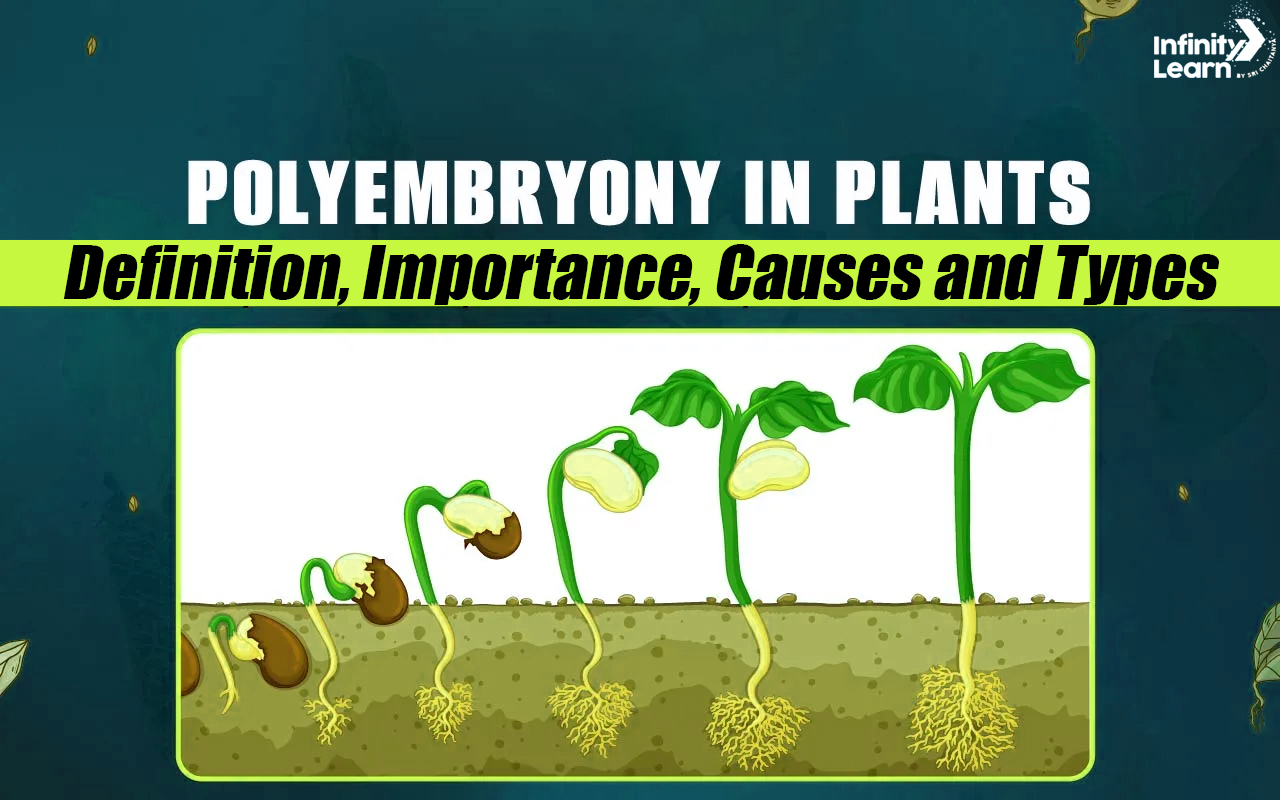Table of Contents
Polyembryony is a fascinating phenomenon in the plant kingdom where a single seed or ovule develops multiple embryos. This unique reproductive strategy has garnered significant attention in the scientific community due to its implications on plant reproduction, evolution, and ecology. In this article, we will delve into the world of polyembryony, exploring its definition, types, examples, meaning, and importance in the context of plant biology.

Polyembryony Definition
Polyembryony involves the development of multiple embryos from a single fertilized egg, a process observed in both plants and animals. In plants, the fusion of male sperm cells with an ovule leads to the formation of seeds, each containing an embryo. Conversely, in animals, fertilization can occur internally or externally, resulting in the formation of the primary nucleus of an embryo.
Polyembryony is a form of clonal development where one egg produces genetically identical offspring, a phenomenon seen across various plant and animal species.
Polyembryony in Plants
Polyembryony is observed in various plant species, including trees, shrubs, and herbs. In plants exhibiting polyembryony, multiple embryos develop from a single seed due to the fusion of multiple sperm cells with a single egg cell. This process, known as polyembryogenesis, leads to the formation of genetically identical embryos from a single fertilized egg cell.
Polyembryony Causes and Types
Various theories explain polyembryony, such as the Necrohormone Theory, where cell degeneration triggers adjacent cells to form adventive embryos, and the Hybridization Theory, which involves gene recombination leading to the creation of multiple embryos.
Polyembryony can be spontaneous or experimentally induced, with types like Cleavage Polyembryony, Made Polyembryony, and Automatic Polyembryony. These types manifest in different ways, such as the division of a zygote into multiple embryos or the fertilization of multiple eggs.
There are different types of polyembryony:
- Polyembryony with multiple embryos: In this type, multiple embryos develop from a single fertilized egg cell, all genetically identical.
- Polyembryony with multiple seeds: Here, multiple seeds form from a single ovule, each containing a single embryo that is genetically identical to the others.
- Polyembryony with multiple seedlings: This type results in multiple seedlings developing from a single seed, all genetically identical.
Polyembryony Examples
Examples of polyembryony include Cleavage Polyembryony in gymnosperms and Simple Polyembryony in plants like Brassica. This phenomenon is significant in horticulture, particularly in the propagation of citrus fruits and mangoes, where genetically uniform seedlings are created from adventive embryos. Polyembryony helps maintain genetic similarity between parent and offspring plants, contributes to disease-free plant propagation, and plays a crucial role in the cultivation of various plant species.
Examples of plants demonstrating polyembryony include:
- Mango: Certain mango tree species exhibit polyembryony, producing multiple embryos from a single seed.
- Citrus: Some citrus species, like oranges and lemons, display polyembryony, leading to the development of multiple embryos from a single seed.
- Eucalyptus: Species such as eucalyptus regnans showcase polyembryony, where multiple embryos form from a single seed.
Importance of Polyembryony
The importance of polyembryony lies in:
- Enhanced genetic diversity: Polyembryony boosts genetic diversity within plant populations, fostering adaptability and resilience.
- Improved survival rates: Multiple embryos from a single seed increase the likelihood of plant survival by allowing multiple seedlings to establish in different environments.
- Ecological impact: Polyembryony contributes to biodiversity and ecosystem health by facilitating the establishment of multiple seedlings in various habitats.
In conclusion, polyembryony is a captivating aspect of plant reproduction that showcases the versatility and adaptability of plants. Understanding polyembryony sheds light on the intricate mechanisms that drive genetic diversity and ecological resilience in plant communities.
Polyembryony FAQs
What is polyembryony and its example?
Polyembryony is the development of multiple embryos from a single seed, as seen in citrus fruits, mangoes, and eucalyptus.
What is polyembryony fruit?
Polyembryony fruits contain multiple genetically identical embryos within a single seed, such as citrus, mangoes, avocados, and guavas.
What is polyembryony and apomixis?
Polyembryony is the formation of multiple embryos from a single fertilized egg, while apomixis is asexual reproduction through seeds without fertilization.
Who is the father of polyembryony?
Antoni van Leeuwenhoek, a Dutch scientist, is considered the father of polyembryony for his 1719 discovery of multiple embryos in an orange seed.








